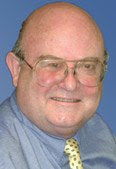A recommendation to Governor-elect Rick Scott that the state transportation, environmental and planning agencies be combined suggests a return to Florida’s past growth management mistakes, a University of Florida planning expert said Tuesday.
Scott’s regulatory reform transition team suggested combining the Department of Transportation, Department of Environmental Protection and Department of Community Affairs during the 2011 legislative session. The team also suggested that the state eliminate local comprehensive plan amendments as a barrier to job growth along with the “development of regional impact” (DRI) process involving state oversight of major developments.
 Jim Nicholas, professor emeritus of both law and urban and regional planning at the University of Florida, said labeling the Department of Community Affairs a regulatory “job-killer” as Scott did during his election campaign is “laughable” because of the excessive amount of homes and commercial space that was built prior to the collapse of the real estate market.
Jim Nicholas, professor emeritus of both law and urban and regional planning at the University of Florida, said labeling the Department of Community Affairs a regulatory “job-killer” as Scott did during his election campaign is “laughable” because of the excessive amount of homes and commercial space that was built prior to the collapse of the real estate market.
Florida, Nicholas said, created its growth management system to reduce conflicts between neighboring counties and between cities and counties. Counties would frequently push landfills to the edge of their boundaries and push traffic and other problems into the next jurisdiction.
“We’ve been there — we are doing full circle,” Nicholas said. “And my view is we got people coming into office now who don’t remember. They were either, frankly, living someplace else or are too young.”
Some developers, he said, won’t be happy with having the DRI process eliminated because that removes the regulatory protection for their approved developments. And he said he isn’t sure what cost-savings would occur by merging three departments, which he said now have distinctive roles.
Transition team member Billy Buzzett said his group that looked at DCA didn’t suggest merging the three departments. He referred questions about that recommendation to Regulatory Reform Transition Team Chairman Chris Corr, who could not be reached for comment.
Buzzett, an attorney from Santa Rosa Beach, said his group looked more at the role of the state in planning rather than any particular agency. He said some local governments now have sophisticated planning staffs and that the state could play a broader role in planning over a longer timeframe.
“You’ve got a lot of land that is held by a few of the large corporations or families,” he said. “Does it make sense that more concentration and more focus be placed on that and to see if there is an opportunity for common ground between those [interests] and the state and the environmental community?”
Charles Pattison, president of 1000 Friends of Florida, said combining the three agencies into one could work — but it depends. Nicholas serves on the board of 1000 Friends along with other professional associations.
1000 Friends of Florida earlier this year failed to win legislative reauthorization of the Department of Community Affairs. Pattison said having a growth management agency still is important, but he added that a consolidated agency could work with the right leadership.
“You are going to have somebody who believes in the growth management mission — that there is a state oversight role,” he said. “And with that function and role comes the same authority to say ‘no’ from time to time.”
(Story provided by the Florida Tribune. Story copyrighted by Bruce Ritchie and FloridaEnvironments.com. Do not copy or redistribute without permission, which can be obtained by contacting brucebritchie@gmail.com.)
